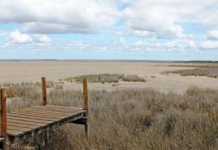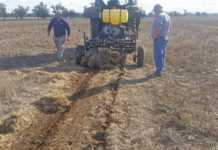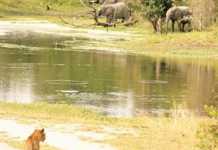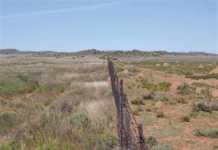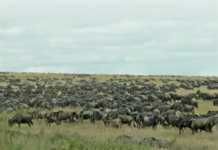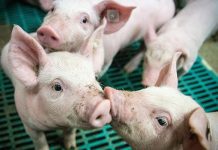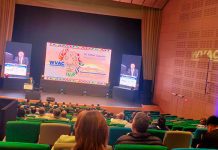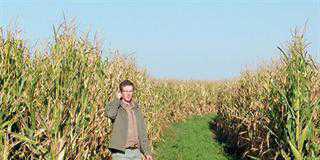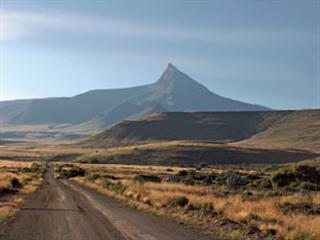
The proclamation of the Compassberg Protected Environment (CPE) was signed by the Eastern Cape’s MEC of Economic Development, Environmental Affairs and Tourism, Mcebisi Jonas, and published in the Government Gazette on 6 July. “This is very exciting. It’s a first for the Eastern Cape and is the way forward for conservation. Private landowners become biodiversity custodians while continuing their farming enterprises,” said Sybert Liebenberg, CEO of the Eastern Cape Parks & Tourism Agency (ECPTA).
The CPE, situated between Nieu Bethesda and Middelburg in the Sneeuberg, is part of the Karoo’s Great Escarpment and is dominated by escarpment grassland and Karoo scrub. The Compassberg, 2 500m above sea level, is the highest peak in South Africa west of the Maluti-Drakensberg range. The magnificent landscape is no country for the meek. At the time of the proclamation, the CPE was covered in snow and the first meeting was almost cancelled due to iced roads.
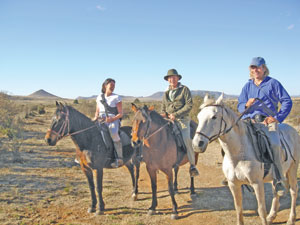
CPE vice-chairperson André van Heemstra (centre), ecologist Dr Dave Gaynor (right) and André’s sister-in-law Nina van Zinnicq Bergmann.
Hardened to conditions, farmers soldiered through to The Rest, the livestock farm of CPE chairperson Paula Kingwill, to discuss the CPE’s strategic management plan. Cold is critical to the CPE’s watershed role, as Dr Dave Balfour, Executive Director: Biodiversity Conservation at ECPTA explains: “Not only is the CPE’s rainfall higher but the temperature, especially during winter, is lower than the surrounding areas. This is important in a region where evaporation is in the order of 10mm/day.
The top of the catchment is able to retain water from autumn through to spring. This water retention enables sub-surface flow, groundwater penetration and recharge to occur in the surrounding areas.” The CPE holds the watersheds and upper catchments of the Klein Zeekoei River, the Klein Brak River and the Diepkloof River which feed into the Orange River, the Great Fish River and the Sundays River respectively. It supplies water to the surrounding towns of Middelburg, Nieu Bethesda, Graaff- Reinet and Richmond.
“As a major source of water in a water scarce region, the conservation, restoration and good management of this upper catchment is very important,” says Dr Balfour. Species conservation and sound veld management are high on the CPE’s priority list. More than 1 200 flowering plants, 33 of which are endemic, have been recorded in the greater Sneeuberg area. Within the CPE there are two habitat specialist species, Euryops petraeus and Selago retropillosa, listed as rare on the South African Plants Red List.
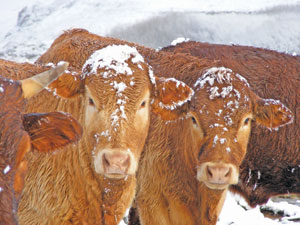
Cattle in the snow on a farm in the CPE in July when the area had one of its heaviest snowfalls in 20 years.
The plain mountain adder (Bitis inornata) is restricted to a tiny range in the Sneeuberg and the Compassberg skolly (Thestor compassbergae) is a butterfly found only on the slopes of the Compassberg. The most important and common burrowing animal in the CPE is the aardvark (Orycteropus afer). Also found are the common molerat, ground squirrels, suricates, yellow mongoose and porcupines. The burrowing behaviour of these animals enhances the heterogeneity and species diversity of plants in the ecosystem.
Termites aerate soil, incorporate organic material and increase water absorption. The northern harvester termite and the nasute harvester termite occur abundantly in the CPE, attracting predators, including the bat-eared fox (Otocyon megalotis), aardvark (O. afer) and aardwolf (Proteles cristatua). There are 133 bird species in the CPE; some listed as vulnerable and some as near-threatened, including the secretary bird, black harrier, Lanner falcon and blue crane.
Climate change
Based on global warming predictions, Dr Balfour believes the CPE will serve as a species migratory corridor and water source. “The predicted 3,8°C temperature rise in the lowland Karoo by 2080 (Hudson et al., 2001) will require species to migrate upwards to survive. The Compassberg, 500m higher than the neighbouring escarpment, will be the only refuge for some temperate species.”
Dr Balfour says by 2040 plants will have fewer days available for active growth as desert-like conditions extend from the West Coast to Graaff-Reinet. “The Great Escarpment is expected to have much the same rainfall but fewer days of rain. The predicted relative stability of the weather on the escarpment with surrounding areas becoming more arid, accentuates the importance of conserving the CPE and surrounding areas,” he says.
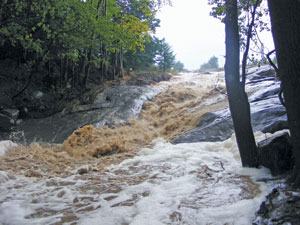
‘The CPE is a major source of water in a water scarce region,’ says Dr Dave Balfour, ecologist.
It reads like science fiction but climate change and environmental sustainability are global realities that we have to face and address, says CPE vice-chairperson André van Heemstra. “Unless human behaviour changes fundamentally in the coming decade, we will be facing severe strain,” he says. “Within the CPE, a new conversation is emerging about biodiversity, ecoystem services, landscape rehabilitation, game, livestock and predator management, food security and regional sustainability.”
Centre of excellence
André, a CPE Sneeuberg Nature Reserve landowner, is involved in setting up the Sneeuberg Centre for Sustainable Development (SCSD) with the CPE as its geographic area of study. Knowledge and insight gained will be shared with government and education and community organisations to promote environmental awareness and leadership. The University of the Free State and NGO Living Lands will collaborate with the SCSD.
“The Sneeuberg is a remote and often harsh environment,” says ecologist Dr Dave Gaynor who has compiled the CPE’s species list and strategic management plan. “Successful farmers here farm sustainably with indigenous game and well-adapted cattle.”
Landowners will monitor their veld and follow a grazing plan that promotes veld health and biodiversity. “I feel a responsibility to protect and conserve this beautiful place and build on the work of my grandfather Roland Kingwill, known as a veld conservationist,” says Paula Kingwill chairperson of the CPE.
The ECPTA’s Manager: Biodiversity Stewardship Programme, Tracey Potts, explained that while farmers needed to comply with legislation pertaining to Protected Environments, they can continue running their farms as commercial agricultural enterprises. Sustainable livestock farming is compatible with biodiversity conservation. The Protected Environment enjoys a high level of formal protection with major conservation gains. The ECPTA has committed to helping the CPE access government expertise and conservation/job creation programmes.
For the government, the CPE represents a cost-effective investment in sustainable development. It is a public-private partnership that will secure and improve water catchment production in a water scarce area. “The CPE is a fine example of how the public and private sector can work together in a beneficial manner,” says Sybert. “An increasing number of private landowners are realising the importance of ecological services and of becoming biodiversity stewards.”
The MEC supports biodiversity stewardship and sees it as the cornerstone of protected area expansion and consolidation, says Sybert. “He recognises it as part of the national programme for enhancing sustainability and the green economy and has been a political pioneer of ‘green development’ in South Africa.”
Second Protected Environment in South Africa
The Compassberg Protected Environment is the second Protected Environment to be proclaimed in South Africa under the National Environmental Management Protected Areas Act of 2003. The first is the KwaMandlangampisi Protected Environment, proclaimed in September 2010, which comprises 23 600ha of livestock farms extending from Wakkerstroom to Luneberg in the high altitude grasslands of southern Mpumalanga.
“The proclamation of Protected Environments is the most important thing that has ever happened to conservation in this country. In the past the attention was always on game reserves and the Big 5 and never on critical areas like the grasslands,” comments livestock farmer Horst Filter whose farm in the Luneberg district is part of the KwaMandlangampisi Protected Environment.
Protection, conservancy and biodiversity stewardship
The Protected Environment is declared in terms of Section 28(1) (a) and (b) of the National Environmental Management Protected Areas Act 2003, Act No 57, which confers formal conservation status on the area and grants legal protection from prospecting, exploration and mining. A formal management plan is put in place. A conservancy is a less formal arrangement between private landowners and/or communities. It offers a degree of recognition and support for landowners regarding the conservation of their land but it offers no legislative protection.
Biodiversity stewardship involves private landowners becoming stewards or custodians of the land and conserving its biodiversity. The state does not have the resources to protect expanded areas. Biodiversity stewardship is the mechanism through which individuals and communities (including land reform communities) can play their part in environmental conservation.
Farmers and landowners who want Protected Environment status need to approach their provincial agent. Current land use, transformation, water catchment status, the presence of wetlands, the presence of rare or threatened species, the suitability of the area as a migration corridor are all factors that will be taken into consideration. The general understanding of climate change and species and environment interaction is that species will be forced to migrate upwards to survive. High-lying areas may qualify for protection without specific high biodiversity value.
For more information contact Tracey Potts, manager of the Biodiversity Stewardship Programme Eastern Cape Parks & Tourism Agency on 042 2920 245 or 079 496 7931, or email [email protected]

